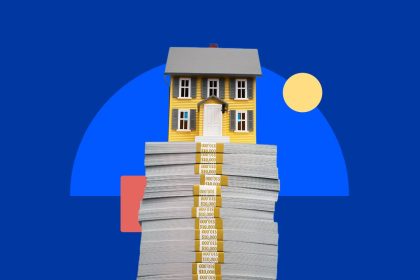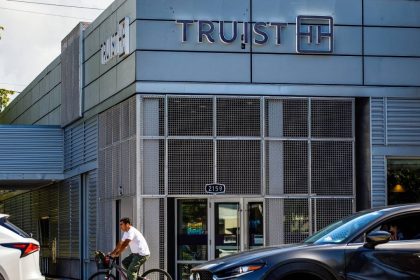Key takeaways
- HO-3 and HO-5 policies differ in how they cover your personal belongings.
- Both HO-3s and HO-5s exclude certain types of damage, such as flooding and earthquakes, from coverage.
- HO-5s are generally more expensive, as they provide broader financial protection.
As a homeowner, you may be surprised to learn that there are eight types of home insurance, which offer varying levels of coverage for homes, condos, mobile homes and apartments. The most common type is HO-3 insurance, which provides coverage for your home, other buildings on your property and your personal belongings. It usually also has liability and medical payment coverage. HO-5 insurance, another common type, is similar, but with more robust coverage and the possibility of higher payouts on claims. In exchange for this higher level of coverage, you will generally pay more for HO-5 coverage. In this guide, we look at the differences between HO-3 and HO-5 insurance to help you decide which one works best for your own situation.
What’s the difference between an HO-3 and HO-5 policy?
To compare HO-3 vs. HO-5 insurance, let’s first look at what’s similar. Both policies cover your home’s structure and personal possessions from insurance perils, or events that cause damage. In some cases, you may be covered for named perils — that is, for perils that are specifically named in your policy. Or they may be covered on an open peril basis, which covers all damage unless it’s from a peril that is expressly excluded in your policy documents, such as flood and earthquakes.
Both HO-3 and HO-5 insurance cover your home itself (along with any other structures on your property such as a detached garage, in-ground swimming pool or gazebo) on an open perils basis. But the similarity ends there. There are distinct differences between the two policies when it comes to Coverage C, the part of your policy that deals with your personal property, from clothing and appliances to furniture and books. With HO-3 insurance, property is covered for named perils — that is, the basic and broad named perils outlined in your policy. HO-5 insurance, on the other hand, covers your belongings on an open perils basis — also referred to as special peril coverage — which includes all direct causes of loss to the dwelling and other structures unless specifically excluded. Partly because of this, HO-5 insurance is usually more expensive than HO-3.
HO-5 policies usually pay out on claims based on replacement cost value (RCV), which is often higher and provides enough money for you to replace your belongings with new ones of similar value. So, you might receive enough to replace your 10-year-old couch with a comparable new one without any out-of-pocket cost. HO-3 policies provide coverage on either an RCV or actual cash value (ACV) basis. ACV includes depreciation. That means that if, say, your 10-year-old couch is destroyed in a fire, you would only receive an amount equal to what the couch is worth now, rather than when it was new.
Learn more: How to read a homeowners insurance policy
| HO-3 | HO-5 | |
|---|---|---|
| Coverage A: Dwelling coverage | Open perils | Open perils |
| Coverage B: Other structures coverage | Open perils | Open perils |
| Coverage C: Personal property coverage | Named perils, with either ACV or RCV payout | Open perils, likely with RCV claim payout |
| Coverage D: Loss of Use | Open perils | Open perils |
Named perils vs. open perils
We’ve talked about the differences between named and open perils, and how these concepts are used for determining claims payouts when your belongings are damaged. Let’s take a closer look at what each type entails.
What are named perils?
HO-3 policies cover your personal property from damage caused by named perils — those that are spelled out in the policy. There are typically 16 named perils, and they are generally the same across the U.S., though there might be differences depending on the state you live in and your insurer.
What are open perils?
A policy written to cover open perils means you are covered for any kind of peril not specifically excluded in the policy. Common exclusions include flood damage, sewer backups, mold or fungal damage, earthquakes, mudslides, sinkholes and mechanical breakdowns.
Many insurers offer optional policy endorsements, or added coverage options, that will cover some of these additional perils that might otherwise be excluded. A common endorsement, for example, covers sewer backup damage.
Bankright insights
With named perils, it is typically up to you (the policyholder) to prove that your loss was caused by one of the perils covered under the policy. With open perils, it is typically up to the insurance company to prove that your loss was caused by one of the perils specifically excluded under the policy.
What isn’t covered by HO-3s and HO-5s?
While a policy can protect your finances from many different types of damage, home insurance doesn’t cover everything.
While these exclusions are fairly standard, keep in mind that HO-3 policies only cover personal property damage caused by the perils listed in the policy. This means that if your belongings are damaged by an event that is not specifically covered, it’s excluded.
HO-3 vs. HO-5 home insurance: How to choose
Since HO-5 policies provide broader coverage, they tend to cost more than HO-3 policies. By paying a higher premium, your personal property will be covered for more loss scenarios than if you purchased an HO-3. That said, the 16 named perils on an HO-3 policy cover the most frequent claims. According to the Insurance Information Institute (Triple-I), 90.9 percent of home claims made in 2022 — the latest industry data available — were for fire, wind, hail, water damage and theft.
Damage caused by an animal you don’t own is an example of a peril that an HO-3 policy would not cover but an HO-5 policy would. Typically, animal damage is not a named peril on an HO-3 policy, and HO-5 policies usually exclude damage from an animal owned by the policyholder. However, foxes, deer, raccoons and even bears can find their way into homes and wreak havoc. If you live somewhere where this is common, you might benefit from more extensive coverage.
Due to HO-5 policies having more stringent underwriting guidelines that not every homeowner will qualify for, it is ultimately an insurer’s call on whether an HO-5 policy is an option for you. If you qualify and an HO-5 policy is within your budget, keep in mind that it might give you more extensive coverage for your personal property than an HO-3 policy. However, if you do not have the budget for the additional coverage, do not need it or do not qualify for an HO-5 policy, an HO-3 policy may be sufficient. 80 percent of U.S. homeowners have an HO-3 policy, according to Triple-I.
*The quotes and citations included on this page have been verified by our editorial team and are accurate as of the posting date. Outlinked content may contain views and opinions that do not reflect the views and opinions of Bankrate.
Frequently asked questions
Why we ask for feedback
Your feedback helps us improve our content and services. It takes less than a minute to
complete.
Your responses are anonymous and will only be used for improving our website.
Help us improve our content
Read the full article here
















